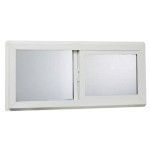How Does a Sump Pump Work for a Basement Bathroom?
Installing a bathroom in a basement presents unique plumbing challenges, particularly regarding wastewater disposal. Since basement bathrooms are typically located below the main sewer line, gravity cannot be relied upon to move wastewater away from the fixtures. This is where a sump pump system designed specifically for bathroom waste comes into play. Understanding how this system operates is crucial for homeowners considering adding a basement bathroom, ensuring efficient and reliable wastewater removal.
A sump pump system used for a basement bathroom fundamentally differs from a standard sump pump used for groundwater control. While a standard sump pump handles relatively clean water accumulating around the foundation, a bathroom sump pump needs to manage solids, liquids, and potentially sewage from a toilet, sink, and shower. This requires a more robust and specialized design.
Components of a Basement Bathroom Sump Pump System
A basement bathroom sump pump system encompasses several key components that work in concert to collect, grind, and expel wastewater. These include the sewage ejector pump, the holding basin (sump pit), the inlet pipes, the discharge pipe, the check valve, and the vent pipe. Each of these components plays a vital role in the proper function of the system.
The
sewage ejector pump
is the heart of the system. It is a powerful pump designed to handle the solids and liquids present in bathroom wastewater. These pumps often incorporate a grinding mechanism to macerate solid waste into smaller particles, preventing clogs in the discharge pipe. The horsepower rating of the pump will vary depending on the load expected from the bathroom fixtures, but it's generally more powerful than a standard sump pump.The
holding basin (sump pit)
is a sealed container that collects wastewater from the bathroom fixtures. It’s typically made of durable plastic or concrete and is buried beneath the basement floor. The size of the basin depends on the anticipated volume of wastewater generated. A properly sized basin reduces the frequency of pump activation, extending the lifespan of the pump and motor.The
inlet pipes
connect the drains from the toilet, sink, and shower to the sump basin. These pipes are typically PVC or ABS and must be installed with a slight slope to ensure proper drainage into the basin. The connection points must be properly sealed to prevent leaks and odors. In some cases, a backwater valve may be installed on the toilet inlet pipe to prevent sewage from backing up into the toilet in the event of a system malfunction or sewer line blockage.The
discharge pipe
carries the wastewater from the sump basin to the main sewer line or septic system. This pipe is usually made of PVC and must be properly sized to handle the pump's flow rate. The discharge pipe should be installed with a slight slope upwards to facilitate drainage. The length and height of the discharge pipe are crucial factors in determining the required pump horsepower.The
check valve
is installed on the discharge pipe to prevent backflow of wastewater into the sump basin after the pump shuts off. This is essential to prevent the pump from cycling on and off unnecessarily, which can shorten its lifespan. The check valve is typically located close to the pump outlet and should be easily accessible for maintenance and replacement.The
vent pipe
is connected to the sump basin and extends outside the building to allow air to escape as wastewater enters the basin. This prevents airlocks and ensures proper drainage. The vent pipe also helps to equalize pressure within the system, preventing odors from escaping into the basement bathroom. Proper venting is critical for a sanitary and odor-free installation.The Operational Cycle
The system operates on a simple but effective cycle. Wastewater from the bathroom fixtures flows into the sump basin via the inlet pipes. As the wastewater level rises in the basin, a float switch is activated. This float switch is connected to the sewage ejector pump, and when the water level reaches a predetermined point, the switch triggers the pump to turn on.
The sewage ejector pump then begins to pump the wastewater out of the basin, through the discharge pipe, and into the main sewer line or septic system. The pump continues to operate until the water level in the basin drops below the level of the float switch. At this point, the float switch deactivates the pump, and the cycle is complete.
The check valve on the discharge pipe prevents wastewater from flowing back into the basin after the pump shuts off, maintaining a relatively constant low water level. The vent pipe allows air to escape from the basin as wastewater enters, preventing airlocks and ensuring efficient drainage. This cycle repeats as needed, ensuring that wastewater is effectively removed from the basement bathroom.
The efficiency and reliability of this cycle depend on several factors, including the size of the sump basin, the horsepower of the pump, the diameter of the discharge pipe, and the proper functioning of the float switch and check valve. Regular maintenance and inspection are essential to ensure that all components are functioning correctly.
Installation and Maintenance Considerations
Proper installation of a basement bathroom sump pump system is crucial for its long-term performance and reliability. Installation is generally best left to a qualified plumber with experience in sewage ejector systems. Incorrect installation can lead to leaks, clogs, pump failures, and potential health hazards.
The installation process typically involves excavating a hole in the basement floor to accommodate the sump basin, connecting the inlet pipes from the bathroom fixtures, installing the discharge pipe to the main sewer line, connecting the vent pipe, and wiring the electrical connection for the pump and float switch. The entire system must be installed according to local plumbing codes and regulations.
Maintenance of a basement bathroom sump pump system is also essential to prevent problems and extend its lifespan. Regular inspections should be performed to check for leaks, clogs, and any signs of pump malfunction. The sump basin should be cleaned periodically to remove any accumulated debris or sediment. The check valve should be inspected to ensure it is functioning properly and preventing backflow.
The float switch is a critical component that should be checked regularly to ensure it is moving freely and activating the pump correctly. If the float switch becomes stuck or damaged, it can cause the pump to run continuously or fail to turn on when needed. Replacing the float switch is a relatively simple task that can be performed by a homeowner with basic plumbing skills.
It's also advisable to have the sump pump system professionally inspected and serviced at least once a year. A qualified plumber can perform a thorough inspection of all components, identify any potential problems, and make necessary repairs or replacements. This preventative maintenance can help to avoid costly and disruptive repairs in the future.
In addition to regular maintenance, it's important to avoid flushing any materials down the toilet that could clog the system, such as feminine hygiene products, diapers, or excessive amounts of toilet paper. These materials can damage the pump and cause the system to malfunction. Proper disposal of these items in a trash can will help to prevent clogs and maintain the system's efficiency.
Finally, consider installing a backup power system, such as a battery backup or generator, to ensure that the sump pump will continue to operate during a power outage. Power outages can occur during heavy rains or storms, when the sump pump is needed most. A backup power system can provide peace of mind and prevent basement flooding in the event of a power failure.

The Anatomy Of A Sump Pump Zoeller Company

All About Basement Bathroom Systems Riverbend Home

Ejector Pump Vs Sump What S The Difference

What Is A Sump Pump How Do Pumps Work Expert Advice

Sump Pump Plumbing Elek

Why You Have A Mini Septic Tank In Your Basement Gold Key Inspection Services

How To Add A Toilet In Basement Bathroom 3 Methods Upflush Standard And Sewage Ejector Pump System At Improvements

What Is A Sump Pump And How Does It Work Fresh Water Systems

8 Essential Sump Pump Maintenance Tips Plumbwize

How A Sump Pump Works Hometips
Related Posts







